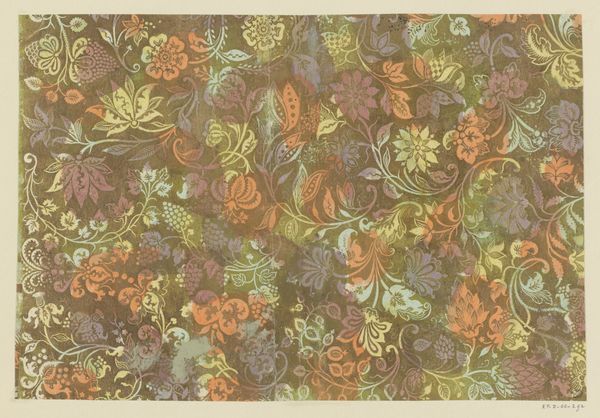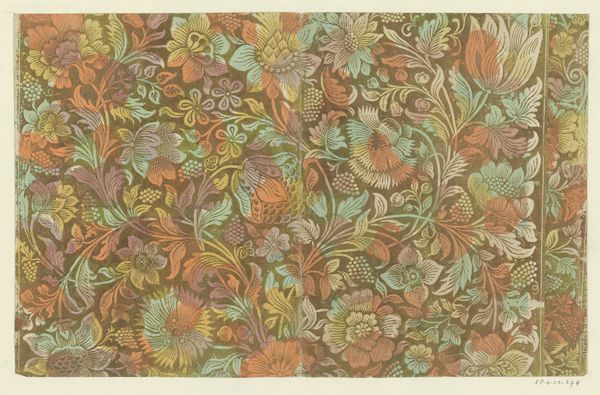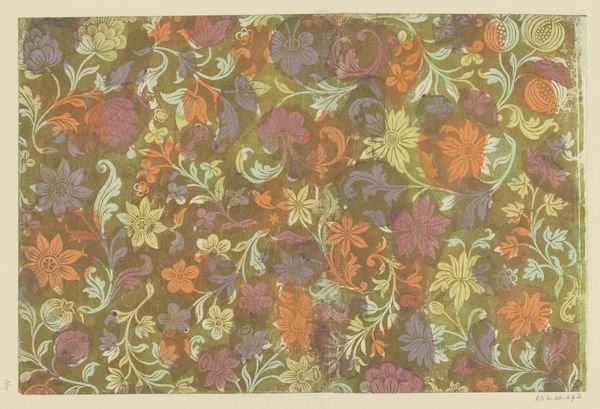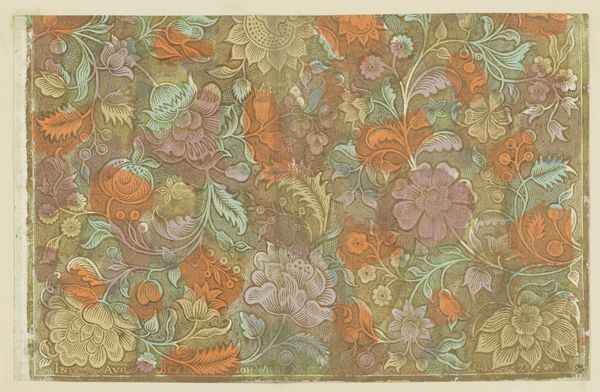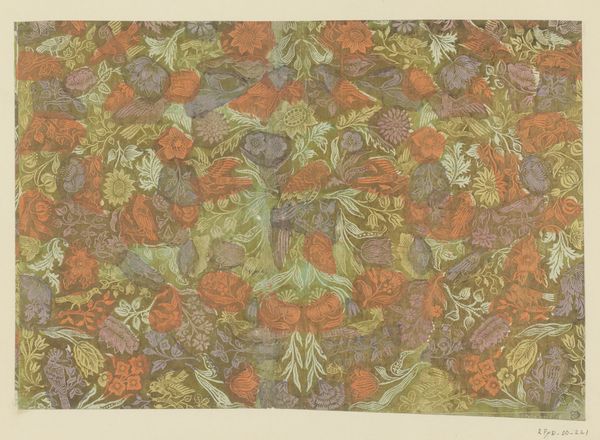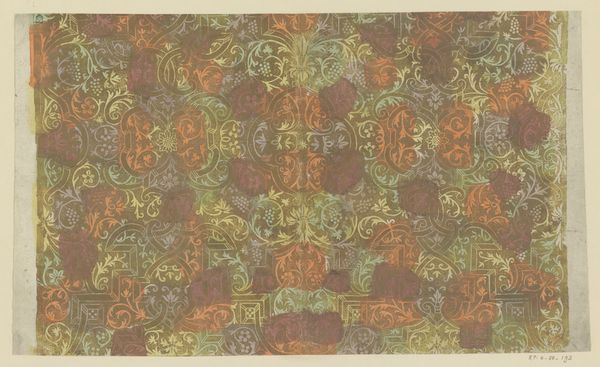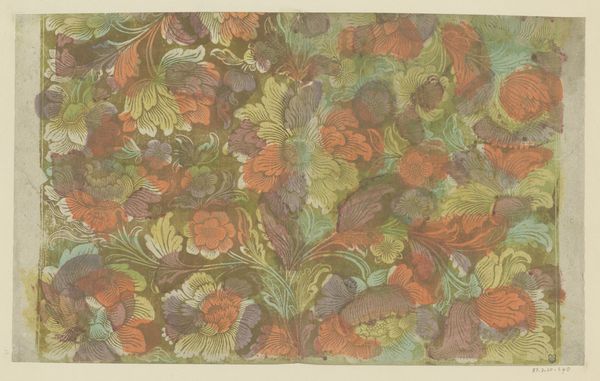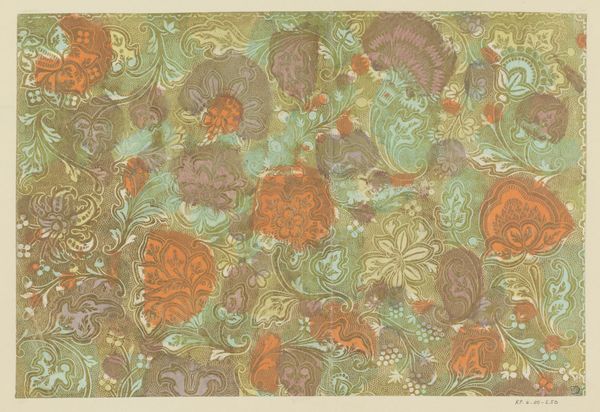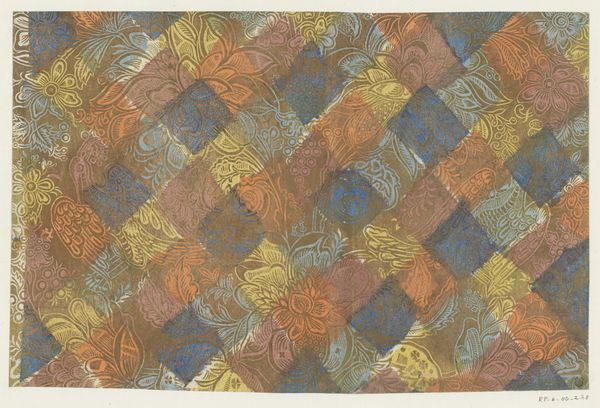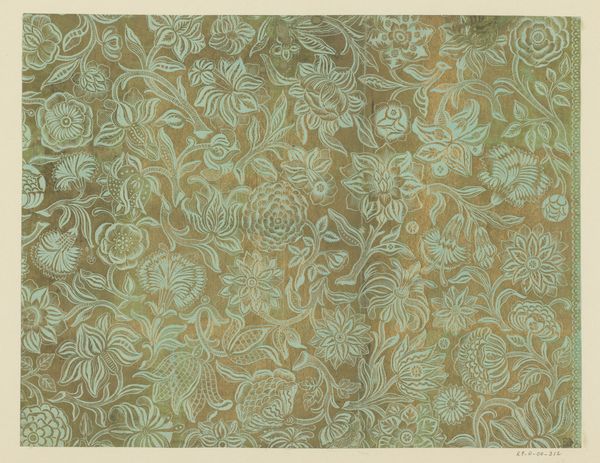
drawing, print, textile, paper
#
drawing
#
natural stone pattern
#
naturalistic pattern
# print
#
textile
#
paper
#
pattern background
#
pattern design
#
abstract pattern
#
organic pattern
#
flower pattern
#
pattern repetition
#
textile design
#
decorative-art
#
layered pattern
#
rococo
Dimensions: height 281 mm, width 376 mm
Copyright: Rijks Museum: Open Domain
Curator: Let's turn our attention to this textile design: “Blad met patroon van bloemen”, or “Sheet with pattern of flowers”, created sometime between 1730 and 1760 by Johann Michael Munck. It combines drawing and printing on paper, a lovely example of Rococo decorative art. Editor: It reminds me of grandma's attic – faded florals, time-worn but beautiful! The muted tones create such a cozy, comforting feel. But also, there is something ever so slightly haunted to the layering and subdued coloration, a melancholic filter almost. Curator: I can see that. Rococo, despite its reputation for lightness, was a style embraced by elites on the cusp of revolution, a world soon to be overturned. Considering the period and Munck's potential patrons, we could read the dense floral motifs as a commentary on fleeting beauty and perhaps even social anxieties linked to class and impending change. The patterns also speak to the global trade of luxury goods during this time. Editor: Absolutely! This work screams privilege. Can you imagine the lives supported by producing something so delicate? It's both captivating and unsettling knowing its origin. The layering… is that typical? I feel like they might even be accidental remnants and smudges? Or even mistakes from creating textile for the elites and aristocrats of the 18th century? Curator: The layering is a significant component. In textile design of this era, layering often alluded to wealth. Each layer, in the socio-political context, becomes a symbol of complexity, even excess, representative of the era's hierarchical society. But your suggestion about the "accidental" nature of the overlapping inks touches on a great point: Rococo loved ornamentation and complexity. Editor: Looking at it that way – wow! Each flower could then also represent a hidden, suppressed person forced into textile manufacturing, all under this larger upper class scheme represented as the flower and floral motif itself? Now I almost feel bad wanting it as wallpaper. Curator: These designs reflect very different realities depending on whether you were creating or commissioning them! Considering the historical context allows us to be reflexive about the beauty while critically examining it at the same time. Editor: Well, now I see grandma's attic AND a history lesson…art never fails to surprise. Curator: Precisely, and hopefully that reframes how we perceive seemingly simple designs.
Comments
No comments
Be the first to comment and join the conversation on the ultimate creative platform.
